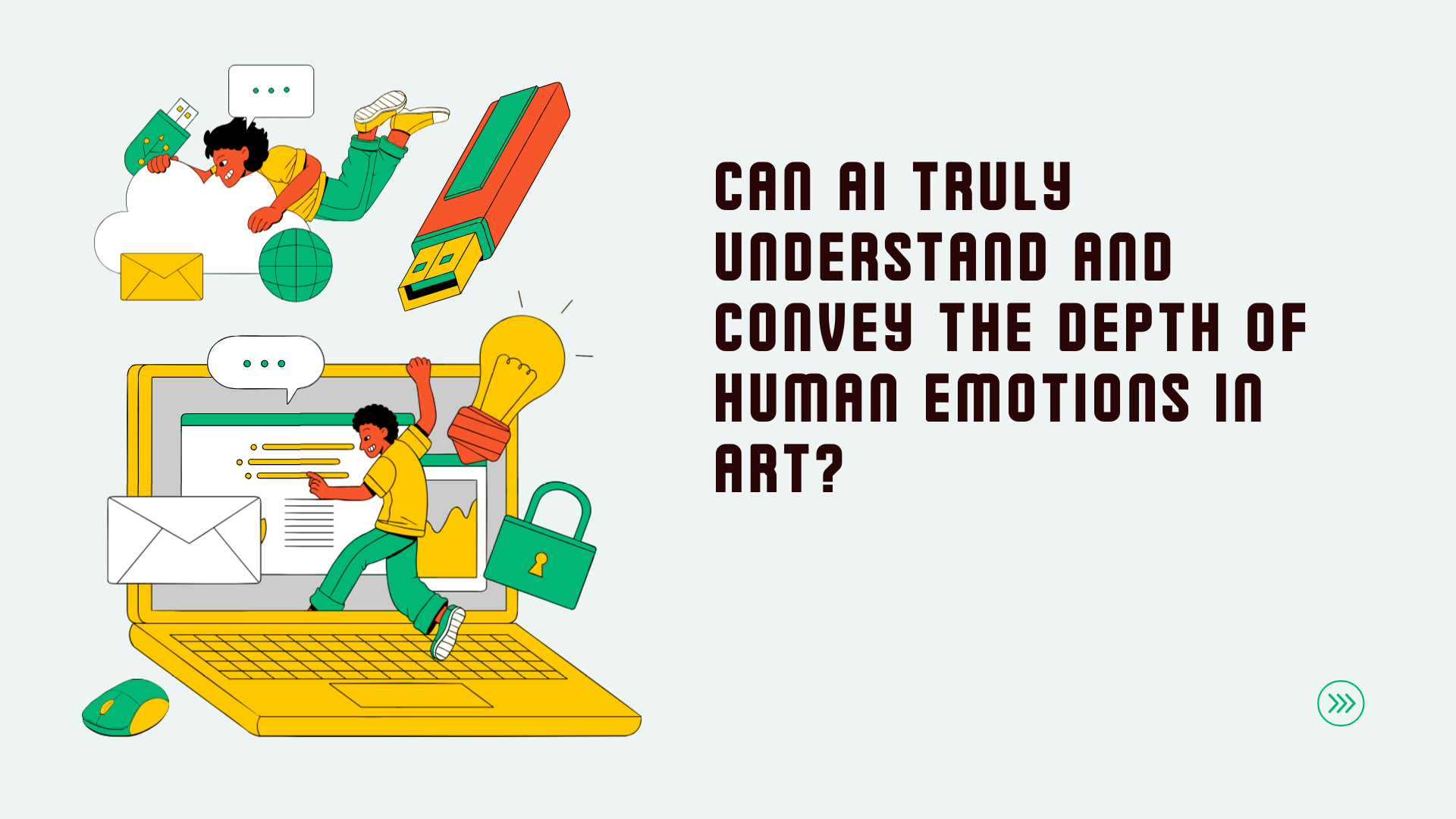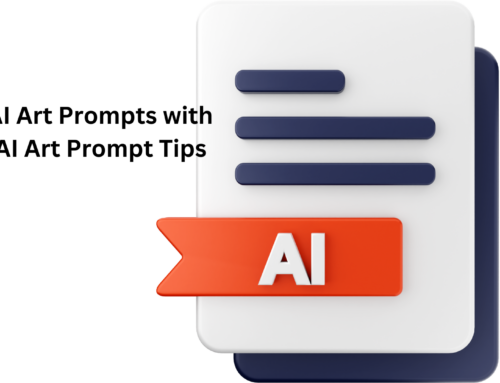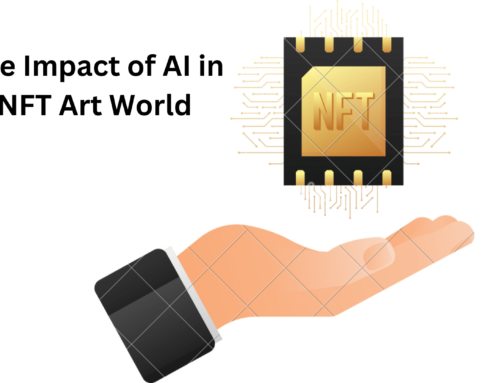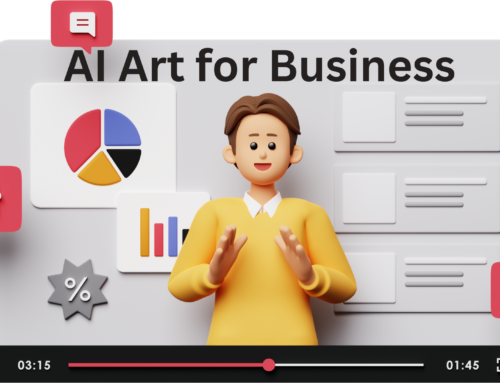Art. It’s a word that conjures up images of paintings, sculptures, music, and literature. But in this digital age, there’s a new artist in town – artificial intelligence (AI). Now, there’s been a lot of chatter about Can AI Truly Create Art? Some folks say yes, while others aren’t so sure. Let’s dive into this intriguing debate.

Does AI-generated art challenge our traditional definitions of art and creativity?
Question one: Does AI-generated art challenge our traditional definitions of art and creativity? Well, imagine this – a computer program creating a stunning piece of artwork, something that even the most seasoned artists might envy. It’s like magic, right? But here’s the twist – there’s no human involved in the creative process. Some argue that this challenges our traditional notions of art, where we believe that creativity is a uniquely human trait. But others say, hey, if it looks like art and feels like art, then why not call it art?
As per Cache Merrill, The founder of Zibtek, “In the realm where technology meets creativity, my work at Zibtek has allowed me to witness firsthand how AI-generated art is indeed challenging and expanding our traditional notions of what art and creativity entail. As we delve deeper into the possibilities that artificial intelligence brings to the table, it becomes apparent that AI is not just a tool but a collaborator, pushing the boundaries of artistic expression beyond what we’ve previously imagined.
This collaboration between human creativity and AI opens up a new paradigm, where the question isn’t about AI replacing human artists but how it can enhance and augment the creative process. It’s a thrilling era for creators, as AI helps us explore uncharted territories of expression, offering new mediums and techniques to convey our visions.”
Now, let’s move on to question two: Can AI ever truly understand and replicate the emotional depth often found in human-created art? Ah, emotions – the heart and soul of art. We’ve all felt that indescribable connection to a piece of art that speaks to us on a deeper level. But can a machine really understand those complex emotions and replicate them in its creations?
Here’s what Cache Merrill has to say on the matter: “Yet, when it comes to understanding and replicating the emotional depth of human-created art, AI faces a more profound challenge. Art is deeply intertwined with the human experience—our emotions, our stories, our cultural backgrounds. While AI can generate works that mimic the aesthetic aspects of art and even evoke certain emotional responses, the nuanced, deeply personal essence that comes from human experience is something AI is still learning to grasp.
The beauty of human-created art lies in its imperfections, the stories behind each piece, and the emotions they evoke based on shared human experiences. AI-generated art brings a new perspective, one that is evolving and learning from us. As we continue to explore this synergy at Zibtek, our aim is not to replicate the human touch but to find how AI can complement it, creating a new form of art that respects and values the emotional depth of traditional creativity while exploring the vast potential of what technology can achieve.”
Can AI-Created Art Be Considered True Art?
Now, let’s tackle the big question: Can AI-created art be considered true art? It’s a debate that’s been raging on since AI first stepped into the creative arena. Here’s a closer look:
- Artistic Intention: One argument in favor of AI-generated art being considered true art is that the intention behind its creation is still artistic. Even though it’s a machine doing the generating, there’s often human input involved in selecting algorithms, curating datasets, and refining the final output.
- Aesthetic Value: Another point to consider is the aesthetic value of AI-generated works. Many of these pieces can be visually stunning, evoking emotions and sparking meaningful conversations. Whether it’s a mesmerizing digital painting or a thought-provoking sculpture, the end result can hold its own against traditional forms of art.
But on the flip side:
- Lack of Human Experience: Some argue that AI lacks the human experience necessary to create truly meaningful art. While it can mimic artistic styles and techniques, it doesn’t have the lived experiences, emotions, or cultural context that often imbue human-created art with depth and resonance.
- Authenticity and Originality: There’s also the question of authenticity and originality. Can art generated by an AI tool truly be considered original, or is it just a sophisticated replication of existing styles and trends? And if the AI is simply regurgitating patterns from a dataset, does it diminish the authenticity of the artwork?
Ultimately, whether AI-generated art qualifies as genuine art depends on our definitions of art and the standards we apply. As AI, acting as a generator, continues to advance through machine learning and generative AI techniques, it embarks on a journey of exploration. This journey involves not only replicating existing artistic forms but also venturing into uncharted territory to create new forms of expression. With each step in this midjourney of art generation, AI refines its abilities, utilizing the data it’s been trained on to push the boundaries of what we consider art. As AI becomes more proficient at creating, the conversation surrounding its role in the art world is likely to evolve in tandem with its progress.
The Rise of Artificial Intelligence in Artistic Expression and Human Art
Let’s delve into this fascinating discussion about AI and art. Imagine walking through an art gallery and admiring a stunning painting. Now, what if I told you that this masterpiece wasn’t painted by a human, but by an AI algorithm? Sounds intriguing, doesn’t it? Welcome to the world of AI-generated art, where algorithms create art just like human artists.
In recent times, AI art has sparked debates about creativity itself. Can AI truly understand human expression and portray it on canvas? Some argue that AI-generated art challenges our traditional views of creativity, blurring the line between what’s made by humans and what’s created by algorithms. With AI generating mesmerizing landscapes and surreal portraits using just a prompt and a few lines of code, it’s natural to question the boundaries of human creativity. However, amidst all this, one crucial question remains: Can AI ever capture the emotional depth and profound resonance often found in art crafted by human hands?
Iimitation or Innovation? The Debate Surrounding AI Art and Originality
Imagine you’re walking through an art gallery, enjoying paintings and sculptures that touch your heart. But what if I told you not all of this was made by human hands? Welcome to the world of AI-generated art, where machines like DALL-E are showing off their creative side. These AI models learn from huge collections of human art, understanding colors, shapes, and styles. As they work through their algorithms, they produce pieces that can compete with any human artist. It’s an exciting twist in the art world, questioning what we mean by creativity and the process of creating art itself.
But here’s the big question: Can these AI systems really grasp the deep emotions often found in human-made art? They can make art that looks good, but can they capture the feelings and experiences that make human art so powerful? It’s like asking if a machine can understand love or sadness—it’s a journey that AI is still on.
While AI has come far in mimicking human creativity, there’s still a question about originality. Can an AI system truly make art like a human can? Or are these AI-made works just fancy copies, missing the heart and soul of true human art? This debate will keep going as AI grows and pushes the boundaries of what we call art.
Can AI Truly Create Art?
Now, let’s dive deeper into the age-old question: Can AI truly create art? It’s a hot topic buzzing around the art world and beyond. Some argue that AI lacks the essence of human creativity, that spark of imagination and emotion that sets our art apart. But others believe that AI could revolutionize the way we think about creativity. With neural networks and generative adversarial networks at play, AI has the potential to push the boundaries of what we consider art.
Imagine A digital art piece emerges from the depths of a neural network, a creation born from algorithms and data. But does it hold the same weight as a painting crafted by human hands? Can AI truly claim intellectual property rights over its creations, or does the credit still belong to its human creators, the ones who programmed it, the ones who provided the initial data and parameters? It’s a complex web of questions surrounding the intersection of technology and art, challenging our notions of authorship and ownership. As AI continues to evolve, it’s not just about replicating human art anymore, it’s about creating AI that can generate entirely new works of art, blurring the lines between human input and machine ingenuity.
The Human Creativity in AI-Generated Art
Let’s explore the human touch in AI-generated art. While AI image generators churn out mesmerizing pieces, there’s an undeniable influence of human creativity woven into the fabric of these artworks. Think of it as a collaboration between human and machine, where the artistic expression of the creator guides the AI technology towards producing art that reflects their unique style and vision. In essence, the human touch infuses AI-generated art with a sense of authenticity, bridging the gap between the digital realm and traditional artistic expression.
Consider this: You walk into the Museum of Modern Art and gaze upon a striking piece of AI-generated art. Sure, it was created by AI, but behind every stroke and every pixel lies the imprint of human ingenuity. From the selection of algorithms to the curation of datasets, humans play a crucial role in shaping the artistic direction of AI-generated content. It’s this blend of human creativity and AI technology that gives rise to truly captivating pieces of art, challenging the nature of creativity and expanding the horizons of what we perceive as art. In a world where AI can generate art that rivals human-made art, the line between creator and creation becomes increasingly blurred, highlighting the symbiotic relationship between humans and AI in the realm of artistic expression.
How AI Makes Art More Accessible
You know, when we talk about art, we often think of it as something deeply personal, something that comes straight from the soul of the artist. But with the advent of technology, especially using artificial intelligence (AI) to generate art, things have taken a fascinating turn. AI art generation is making waves in the art world, and its impact is undeniable.
Using AI to generate art opens up a whole new world of possibilities. It’s like having a virtual studio right at your fingertips, where you can experiment with different art styles and techniques without any fear of judgment. This accessibility is changing the way we perceive art. No longer is it confined to the realm of the elite; now, anyone with a computer and an internet connection can dabble in the production of art.
Sure, some may argue that AI-generated art lacks the creativity and originality of pieces created by a human artist. But I beg to differ. Many AI models are trained on vast datasets of artwork from various periods and styles, allowing them to mimic the techniques of renowned artists with remarkable accuracy. And let’s not forget that AI is being used not to replace but to augment human creativity. Artists and AI are collaborating, pushing the boundaries of what art can be. Who knows, maybe in the not-so-distant future, we’ll see exhibitions featuring works co-created by artists and AI, blurring the lines between man and machine, creativity and computation.
Who Owns AI-Generated Art?
When it comes to AI-generated art, the question of ownership is like a puzzle waiting to be solved. Who gets to claim the rights when it’s a blend of human creativity and AI algorithms at play? It’s not as straightforward as when a painting is solely the result of a human artist’s imagination.
Making sure that AI doesn’t overshadow or pose a threat to human creativity is crucial here. Art is deeply personal, often reflecting the unique perspective of its creator. But, let’s not underestimate the role AI plays in the creation of art. AI can be trained to produce artworks that challenge our traditional definitions of creativity and originality, potentially reshaping how we perceive and value art. So, untangling the ownership of AI-generated works becomes a complex task we’re still grappling with. Some argue that the human artist should hold the rights since they initiated the process, while others believe that the programmers behind the AI algorithms should also have a stake. It’s a lively debate that’s likely to continue as AI continues to evolve and make its mark on the art world.

Exploring Airbrush AI
In the world of digital creativity, Airbrush AI stands out as a powerful tool reshaping how we perceive art. This text to image generator harnesses the prowess of artificial intelligence to breathe life into visual concepts, challenging conventional notions of creativity. Here’s a glimpse of what makes Airbrush AI a game-changer:
- Efficiency: With Airbrush AI, generating artwork becomes a breeze, saving artists valuable time and effort.
- Versatility: From landscapes to portraits, this tool can conjure a wide array of visual content, catering to diverse artistic needs.
- Precision: AI algorithms embedded within Airbrush AI ensure meticulous attention to detail, resulting in stunningly realistic images.
- Innovation: By leveraging vast datasets, Airbrush AI continuously learns and evolves, pushing the boundaries of what’s creatively possible.
- Accessibility: Whether you’re a seasoned artist or a novice, Airbrush AI opens doors to creativity, making art creation more inclusive and accessible to all.
As we navigate the ever-evolving landscape of AI-generated artwork, tools like Airbrush AI prompt us to rethink traditional definitions of art and creativity. With each stroke of code, a new masterpiece is born, blurring the lines between what’s human-made and what’s generated by artificial intelligence.
Conclusion
In conclusion, the rise of AI-generated art raises some fascinating questions about the very essence of creativity and the idea of art itself. While some may argue that AI should be considered as just another tool in the artist’s toolbox, others see it as a groundbreaking force that challenges our traditional notions of what art is. But regardless of where you stand on the matter, one thing’s for sure: working with AI opens up a whole new realm of possibilities. It’s true that AI can replicate and even surpass certain aspects of human creativity, but the nature of art is still deeply rooted in human emotion, expression, and experience. So, while AI-generated art may change the landscape of the art world, the essence of art remains a distinctly human endeavor.








Leave A Comment